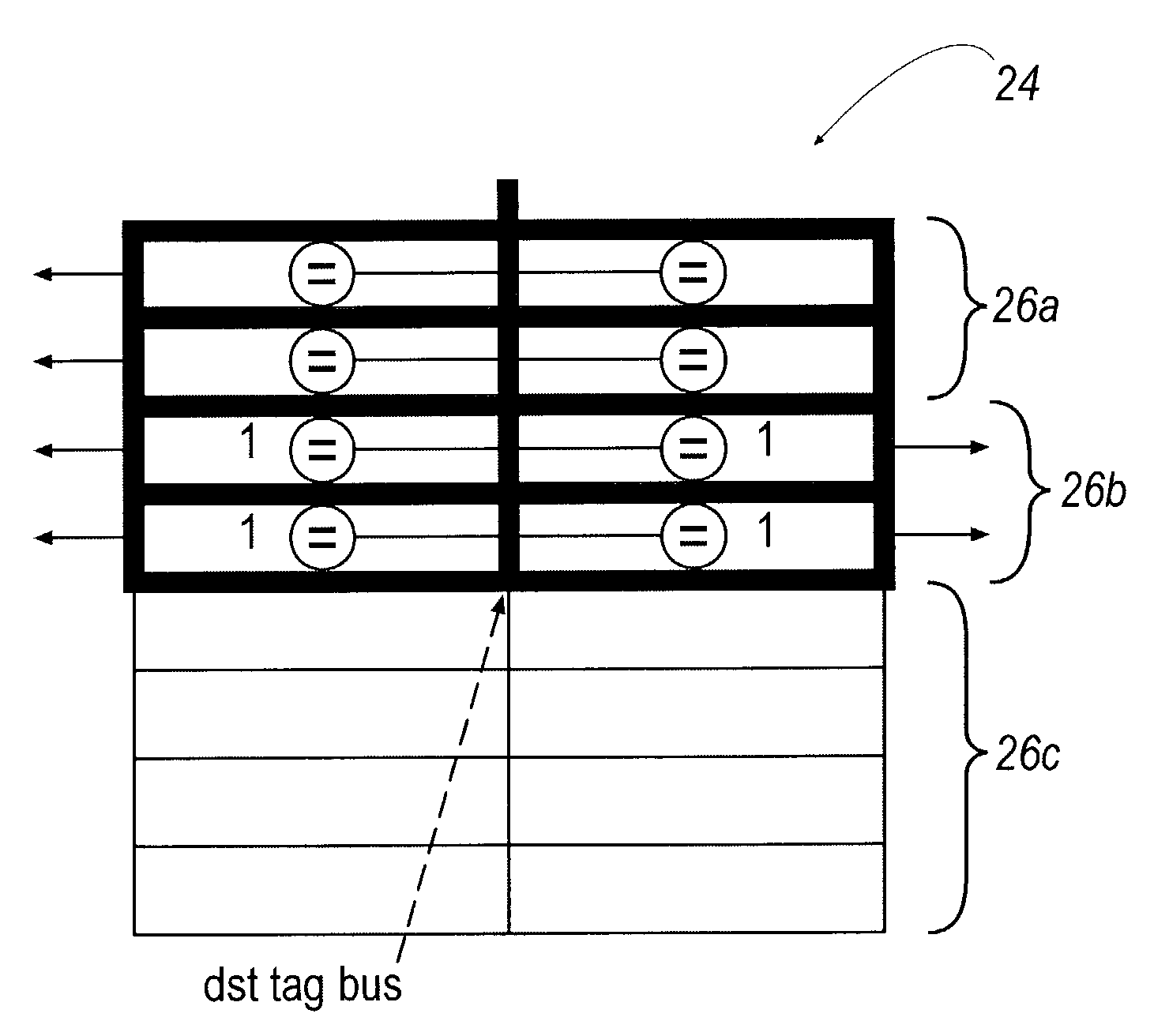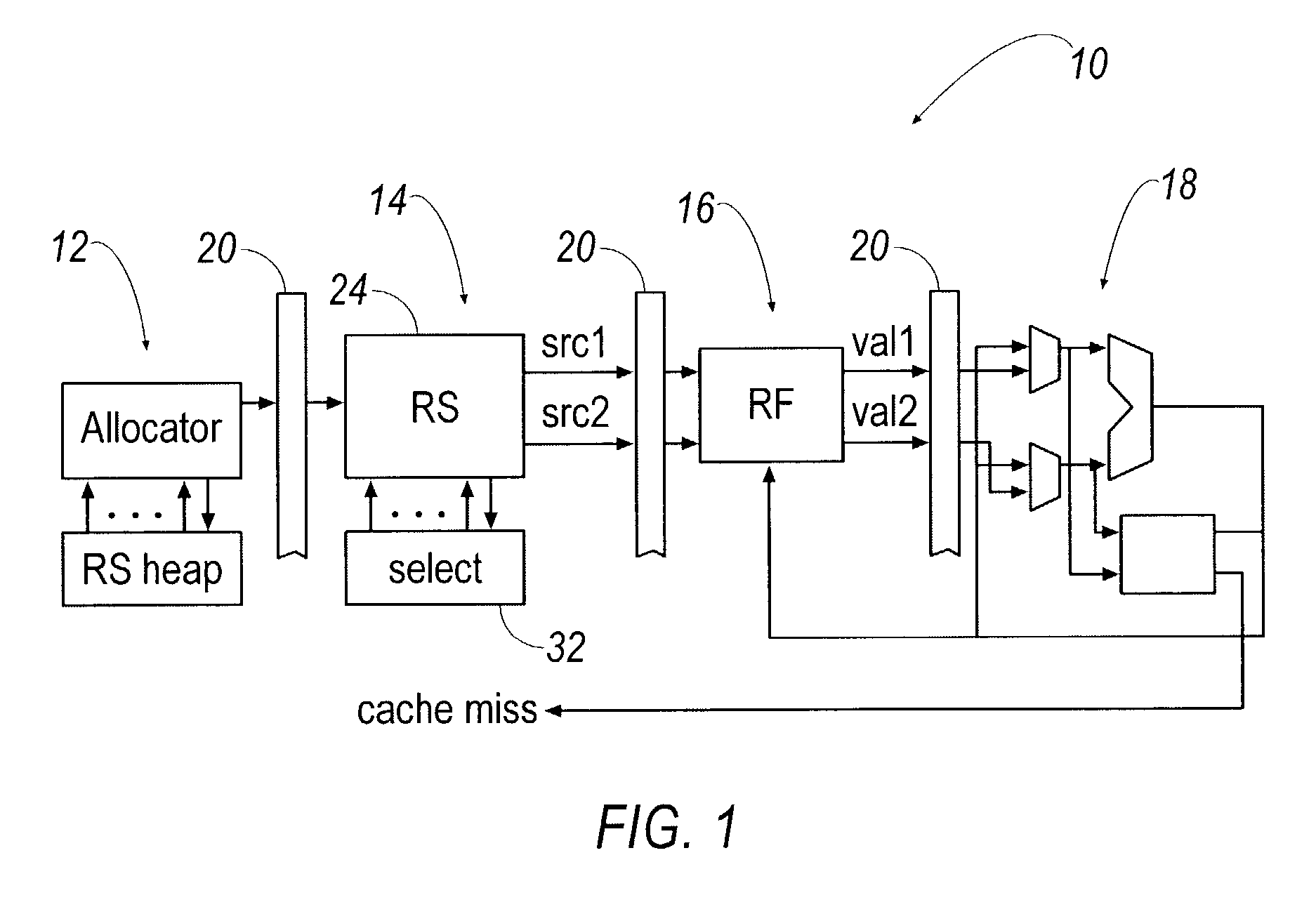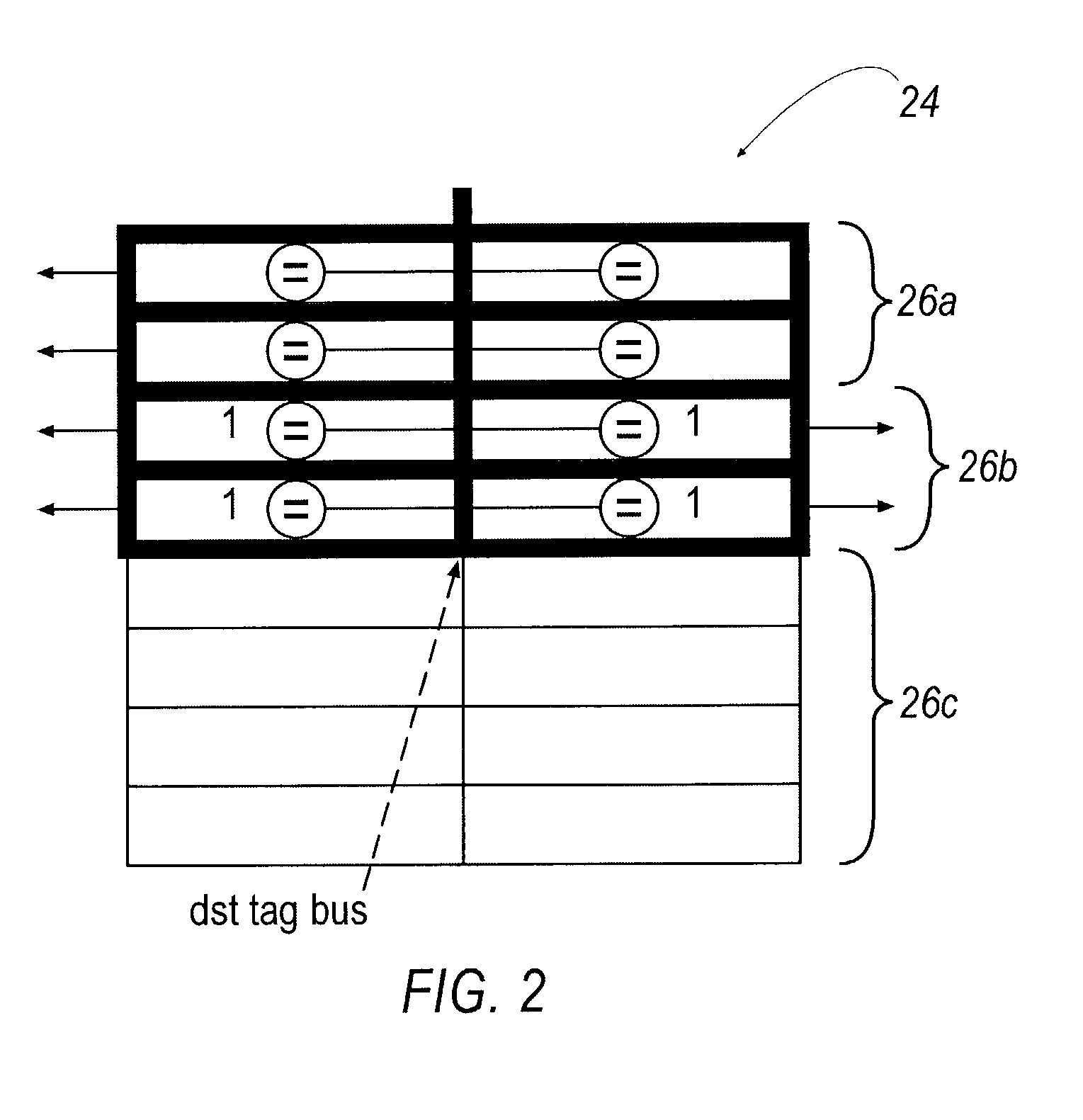Technique for reduced-tag dynamic scheduling and reduced-tag prediction
a dynamic scheduling and dynamic scheduling technology, applied in the field of dynamic scheduling techniques, can solve the problems of increasing parallelism at the expense of slower scheduler clock speed, increasing design difficulty, and increasing energy consumption of embedded processors
- Summary
- Abstract
- Description
- Claims
- Application Information
AI Technical Summary
Benefits of technology
Problems solved by technology
Method used
Image
Examples
Embodiment Construction
[0017]It is to be understood that the present invention may be embodied in other specific forms without departing from its essential characteristics. The illustrated and described embodiments are to be considered in all respects only as illustrative and not restrictive. The scope of the invention is, therefore, indicated by the appended claims rather than by the foregoing description. All changes that come within the meaning and range of equivalency of the claims are to be embraced within their scope.
[0018]The present invention is based on most tag scheduler comparisons being superfluous to correct operation of the instruction scheduler. Specifically, most instructions placed into the instruction window do not require two source tag comparators due to one or more operands being ready, or because the operation doesn't require two register operands.
[0019]Referring now to FIG. 1, a dynamic scheduler pipeline 10 according to an aspect of the present invention is shown and described. The...
PUM
 Login to View More
Login to View More Abstract
Description
Claims
Application Information
 Login to View More
Login to View More - R&D
- Intellectual Property
- Life Sciences
- Materials
- Tech Scout
- Unparalleled Data Quality
- Higher Quality Content
- 60% Fewer Hallucinations
Browse by: Latest US Patents, China's latest patents, Technical Efficacy Thesaurus, Application Domain, Technology Topic, Popular Technical Reports.
© 2025 PatSnap. All rights reserved.Legal|Privacy policy|Modern Slavery Act Transparency Statement|Sitemap|About US| Contact US: help@patsnap.com



